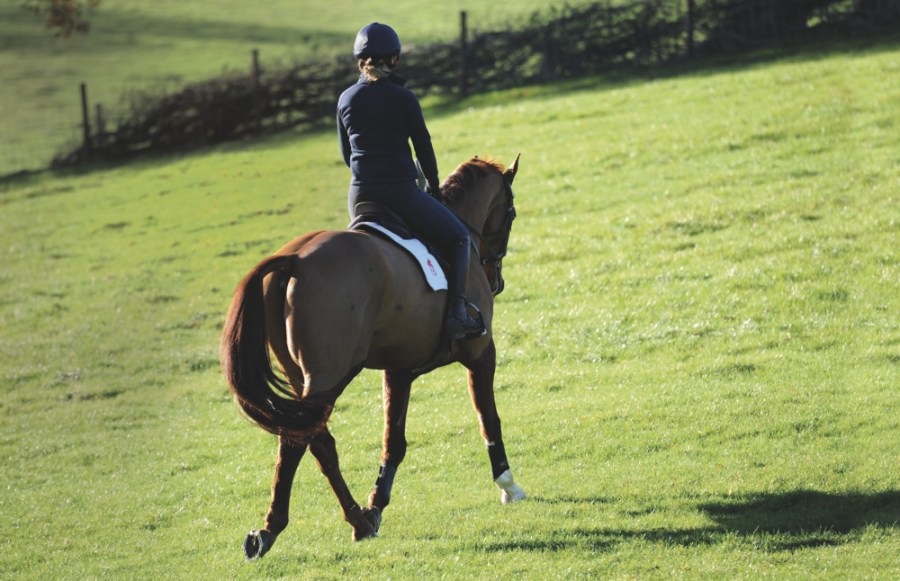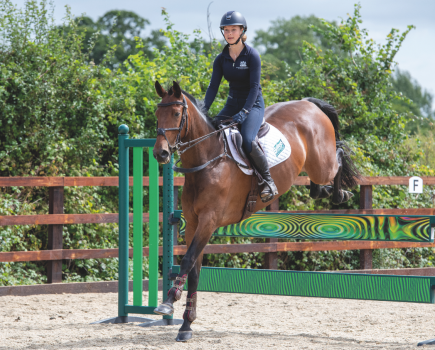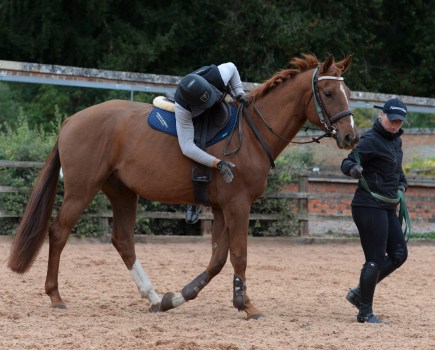Showing star turned grand prix dressage rider Louise Bell explains three exercises she uses to improve her horse’s paces during a short but sweet 30-minute schooling session.
Everyone dreams of having a horse who is naturally flamboyant and, providing your horse is trainable and sound, their paces can be developed. The first thing you need to work on is improving their strength, including their core strength, and this is something that takes time.
The following exercises will help to teach your horse to sit back, take the weight behind and lighten their front end, which, in turn, helps develop expression.
Exercise 1:
Time: 10 minutes
To develop strength, I use my natural environment, including the great hills here on the Upton estate in Oxfordshire.
This not only builds up my horses’ fitness, stamina and strength, but it’s also great for keeping them keen and fresh. Let’s face it, going around in circles in the arena all the time isn’t much fun!
- Long grass and tramlines that I find out hacking are my favourites. I use the tramlines to practise straightness, and trot slowly through the long grass as this gives horses a feel of how they can elevate in both trot and canter. When you go into the arena and start teaching passage, there is a muscle memory there already.
- When performing hill work, always start with a controlled walk as this is the pace in which your horse has to use all of his muscles and work hardest. Simply walking uphill and performing movements and transitions will not only develop strength and fitness, but it will also help refine your aids and your horse’s acceptance of them.
- When working horses uphill, I like them to be on a soft, low contact so they’re stretching their head and neck forwards and down, and using their back, pushing from behind. This means they will stretch all the way down their hamstrings, learning to push instead of pull. I take up a light seat when going uphill, but avoid tipping too far forward as this puts all of your weight on your horse’s front end.
- Practising going downhill is just as important. You don’t need to sit back, just sit straight and still and guide your horse steadily down. He has to learn where to put his feet and how to balance himself.
Exercise 2
Time: 10 minutes
Passage is one thing, but that beautiful trot needed to excel at grand prix is another. Fear not, though, as it can be achieved with a few good structural exercises.
- I always start developing the trot by using shoulder-in, renvers and travers. Moving the body between these three movements really develops your horse’s core strength, which then helps to develop the power in the trot.
- Perform lots of half-halts to move forward and back. The half-halt is used to engage your horse’s back end, not to slow him down. Don’t half-halt with your hand, but with your back, seat and minor adjustments in your weight. As exhausting as this may be for the rider, it transforms your horse.
- Practise by simply riding around your arena on both reins, performing travers, renvers and shoulder-in with half-halts in between each movement and splitting it up with a short diagonal medium trot. Then repeat, rest, repeat. I use this a lot in my warm up.
- Remember that you’re preparing for the ring by doing these exercises, getting your horse in front of your seat and legs — once you achieve this, it’s the best feeling.
Exercise 3
Time: 10 minutes
Transitions are key to developing canter, as they also develop collection. When you want to collect, your horse needs to collect from your body and legs, not from your hand — otherwise, you shut down the back end and then you don’t get collection. It’s about activity, not slowness.
- With more advanced horses I ride trot-canter, canter-trot, walk-canter and canter-walk transitions, before a little shoulder-forward (very mild shoulder-in) and travers in canter. Again, ride forward and back in the travers, basically always keeping your horse supple and listening.
- Spirals are also beneficial. Ride a smaller circle of about 10m and then ask for a bigger circle by riding from your inside leg to outside hand. You can also ask for a bigger canter while increasing the size of the circle and a more collected canter when the circle is small. Repeat, rest, repeat on both reins.
- This prepares your horse to go on to leg-yield and half-pass really well.
Love hacking? Join our free #Hack1000Miles challenge and see how far you can go!
Subscribe to Your Horse Magazine – the perfect Christmas gift!









